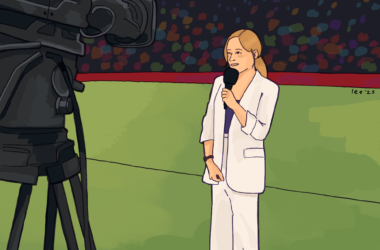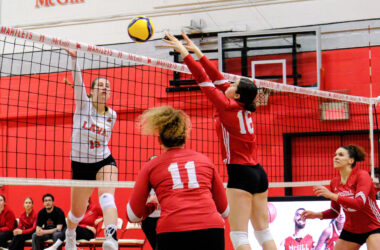When the COVID-19 pandemic brought sports leagues across the world to a screeching halt in March 2020, many sports journalists were faced with job losses, while those who remained employed were left scrambling for content. Broadcasters and writers continued reporting on current developments in sports, such as leagues’ responses to the pandemic and the reactions from within the world of professional and collegiate sports. Without new games and events to report, however, sports journalists quickly ran out of new material to analyze.
With spots to fill in print and programming, sports journalists were forced to get creative. While fans certainly missed seeing their favourite teams and leagues in action, the pandemic presented a unique opportunity for alternative content. In March 2020, The Guardian began releasing retrospective pieces in a series titled “My favourite game,” in which writers reflected on their most cherished memories of matchups from across a variety of sports. The series highlighted the value of something often overlooked in sports journalism: Hindsight. In a regular season, multiple games need to be covered and broken down in a single week, leaving little time for discussion and reflection on anything outside of ongoing games, trades, and injuries. “My favourite game” is an illustration of experiences that most sports fans have had; it is a collection of instances that remind readers and writers alike why they love the sports and teams that they do. It is also a series that would likely have never been published in a regular season.
Alongside reflections on the past, some reporters began writing stories about the more obscure elements of their favourite leagues, and media outlets gave attention to sports that rarely receive mainstream coverage. Sports Illustrated’s Jake Fischer released a story on NBA halftime performer Red Panda, highlighting the work that goes into the spectacle that is modern sports viewing. ESPN offered airtime to the American Cornhole League, moving the league up from ESPN3 where the games were first broadcast in 2016. Again, the pandemic offered an unusual opportunity to delve deeper into the stories that make up modern sports as we know them, but that often remain forgotten, unknown, or are simply taken for granted.
In some cases, the pandemic has allowed the business model of sports media to be completely rethought. When the entire staff of Deadspin quit in October 2019 after interim Editor-in-Chief Barry Petchesky was dismissed for refusing to “stick to sports,” they began brainstorming new ways to bring their coverage and work back to the public. They wanted a platform that would provide them with the editorial freedom that they sought, so they began the process of creating their own site. However, the pandemic’s effects on the economy led major investors to pause negotiations on deals with the former staff of Deadspin. With traditional funding paths and business models no longer viable, the idea of a co-operative mutually-owned organization that would hopefully not fail its employees in the way that other media outlets had was put on the table. In July 2020, 18 of the 20 staffers who had left Deadspin launched Defector Media, bringing politics, sports, and all of the quirky stories that are intertwined in those worlds to their new blog.
The negative impacts of the COVID-19 pandemic on jobs and lives both within the sports industry and elsewhere are undeniable and should certainly receive media coverage. However, the temporary absence of live sports did not hinder the sports journalism and storytelling that continued. A global crisis has forced writers, reporters, broadcasters, publishers, and fans to adopt a new lens for enjoying sports, allowing for more diverse stories from across the sporting landscape to be showcased.








